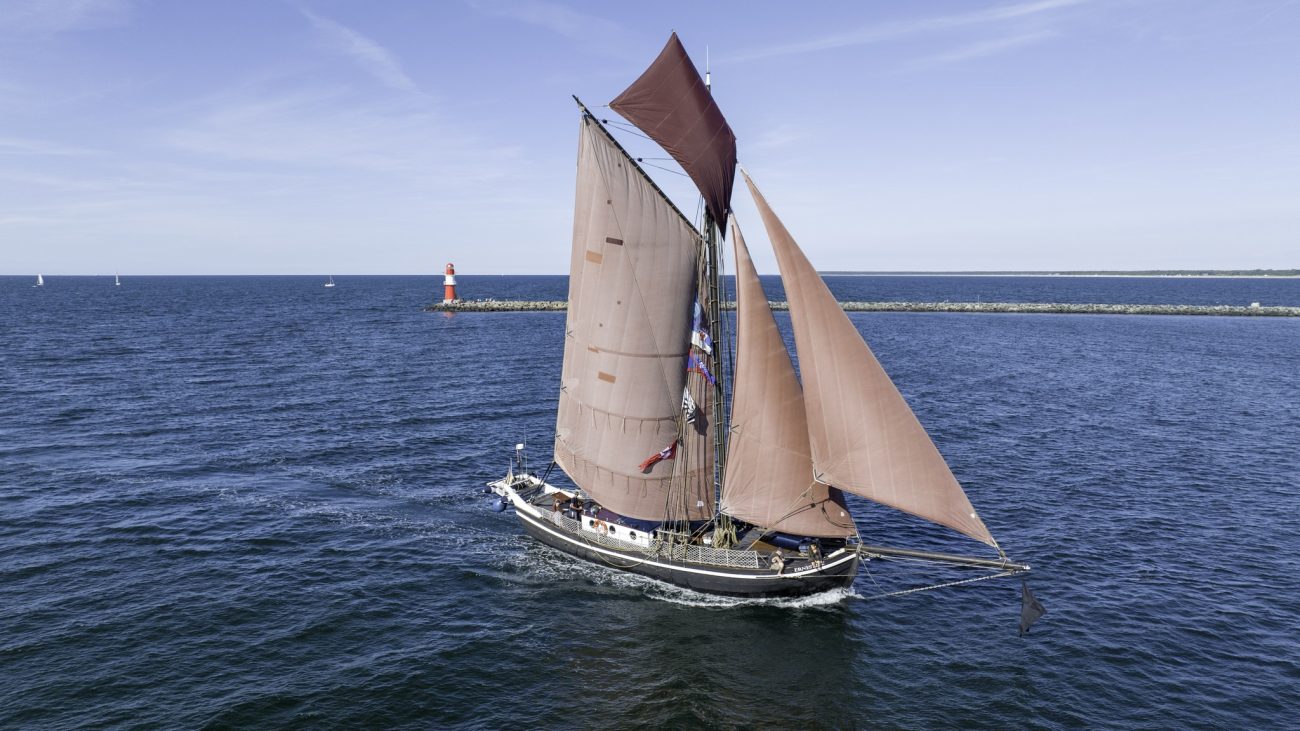Ernestine






In June 1899, Ernestine was launched as Seequatze at Karl Manthé’s shipyard in Wolin, Pomerania. Two years later, she was registered in Szczecin as a commercial fishing vessel under the name Hildegard. She sailed the Baltic Sea without auxiliary engines. The first owner was Martin Stöwahse, a fish wholesaler from Szczecin, and the ship’s capacity was 15 cubic meters.
Until World War II, the ship served its original purpose — transporting live fish from fishing boats to major ports both domestically and abroad. At that time, before freezers for storing fish existed and when many parts of Pomerania were still inaccessible by rail, Quatzen-type ships were built with hulls perforated by thousands of holes. These allowed seawater to continuously flush through, keeping the fish alive during transport. Quatzen were typical merchant vessels that had to compete on the Baltic Sea, where speed translated into profit — the fastest ships earned the highest returns.
In the 1950s and 1960s, the “Ernestine” continued to sail under the name “WOG 100” in the Wolgast and Rankwitz area on the Piana River. However, the ship had lost its mast during the war, and its machinery and wheelhouse were repurposed for transporting fish to Berlin. The development of refrigeration technology rendered ships like Ernestine obsolete. Eventually, she was moored in Wolgast as a stationary fish box and left to deteriorate.
In the 1970s, the vessel was salvaged by Rolf Reeckmann from Seedorf on Rügen and taken to the Jahrling shipyard in Freest, where the hull was rebuilt from oak, with only a few original components retained. This time, the fish box was discarded. In 1977, the ship was re-launched under the name Ernestine, equipped with schooner rigging and a loose keel. That year was officially recorded in the ship’s certificate as her second year of construction. For the next 25 years, Rolf Reeckmann diligently maintained the ship, carrying out numerous restoration works.
Despite the many renovations and the transformation from a cutter to a schooner, Ernestine was declared bankrupt in 2003 and left abandoned in the port of Glückstadt on the Elbe. In the spring of 2005, Tilmann Holsten and Nele Hybsier, representing the association “European Academy of Healing Arts” in Itzehoe, discovered the vessel and purchased it at a public auction. Shortly thereafter, the ship returned to Pomeranian waters, to Lassan on the Piana, where ad hoc repairs were carried out.
Since 2006, Ernestine has once again been sailing with guests on the Baltic Sea, undergoing numerous repairs to both hull and deck. In the winter of 2006/2007, a decision was made to return to a single-masted cutter configuration, with a new rig that echoed the original Quatzen design. The vessel’s designation was also changed from “Pomeranian schooner” to “Pomeranian Seequatze,” in reference to its original name from 1899.
In the summer of 2011, Ernestine not only won the Hanse Sail regatta as the fastest single-masted ship but also recorded the best overall time — outperforming such vessels as Wylde Swan, Twister, Albert Johannes, Oll Korl, Standarth, and many others.
From the summer of 2012 to the spring of 2013, the ship embarked on what was likely the longest voyage in its history: from Lassan via Brest, Morocco, the Canary Islands, Madeira, Galicia, and England, before returning to Lassan. In May 2015, after 10 years, Ernestine left the port of Lassan, as its access no longer provided sufficient water depth. She was warmly welcomed in Lauterbach on the island of Rügen, where she found a new home port.